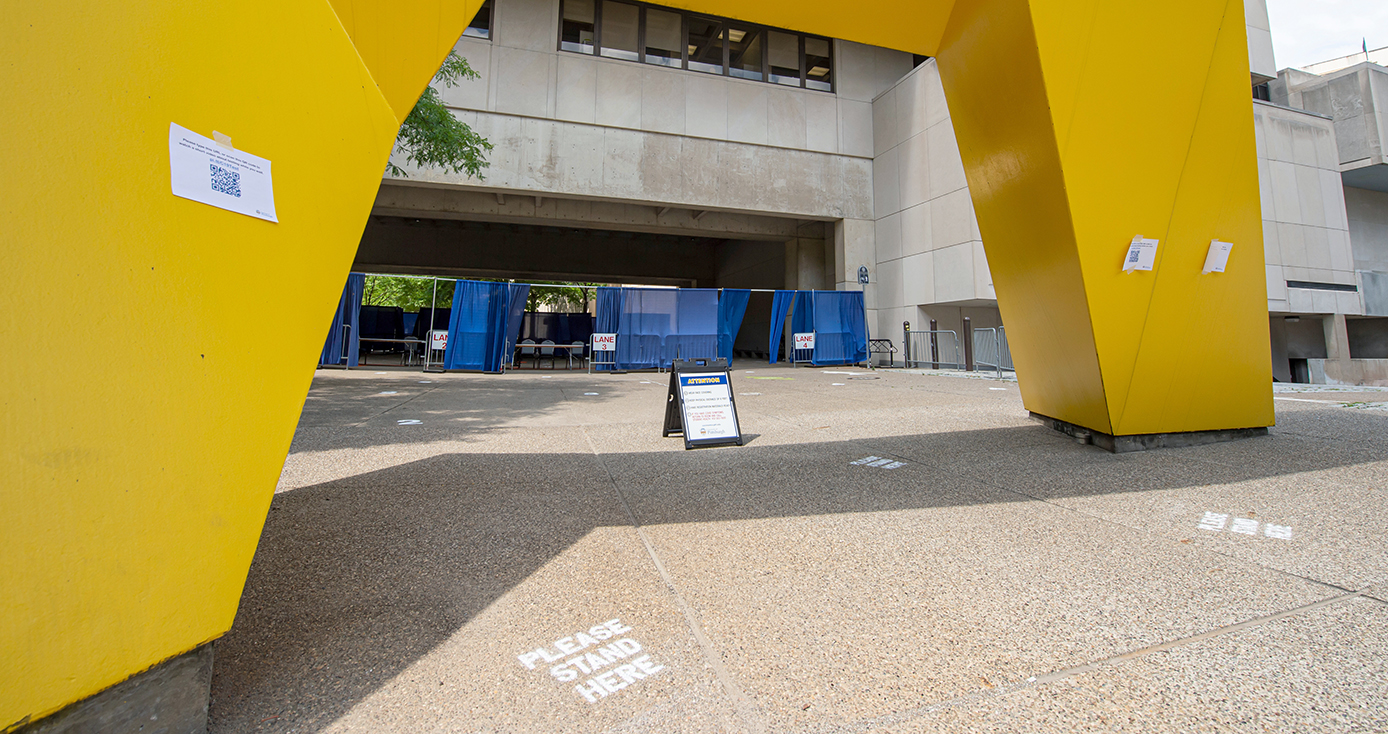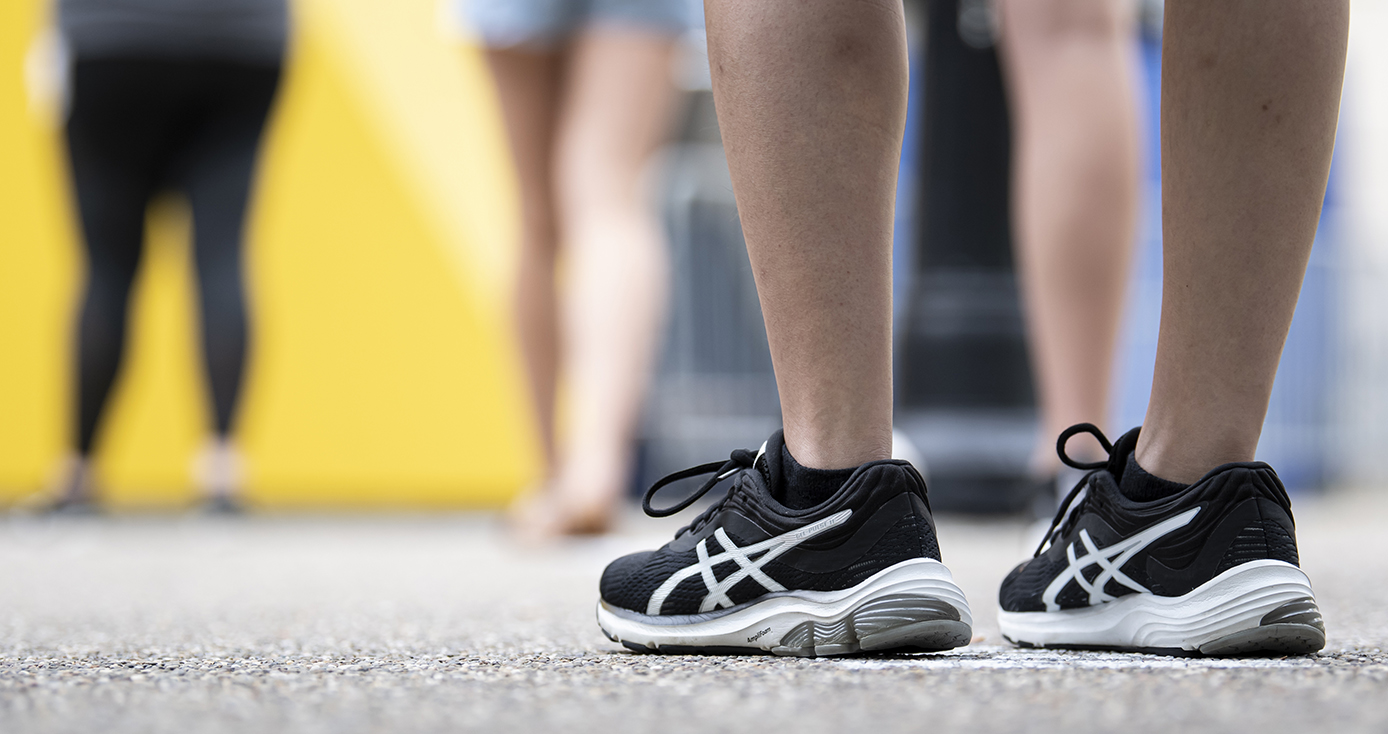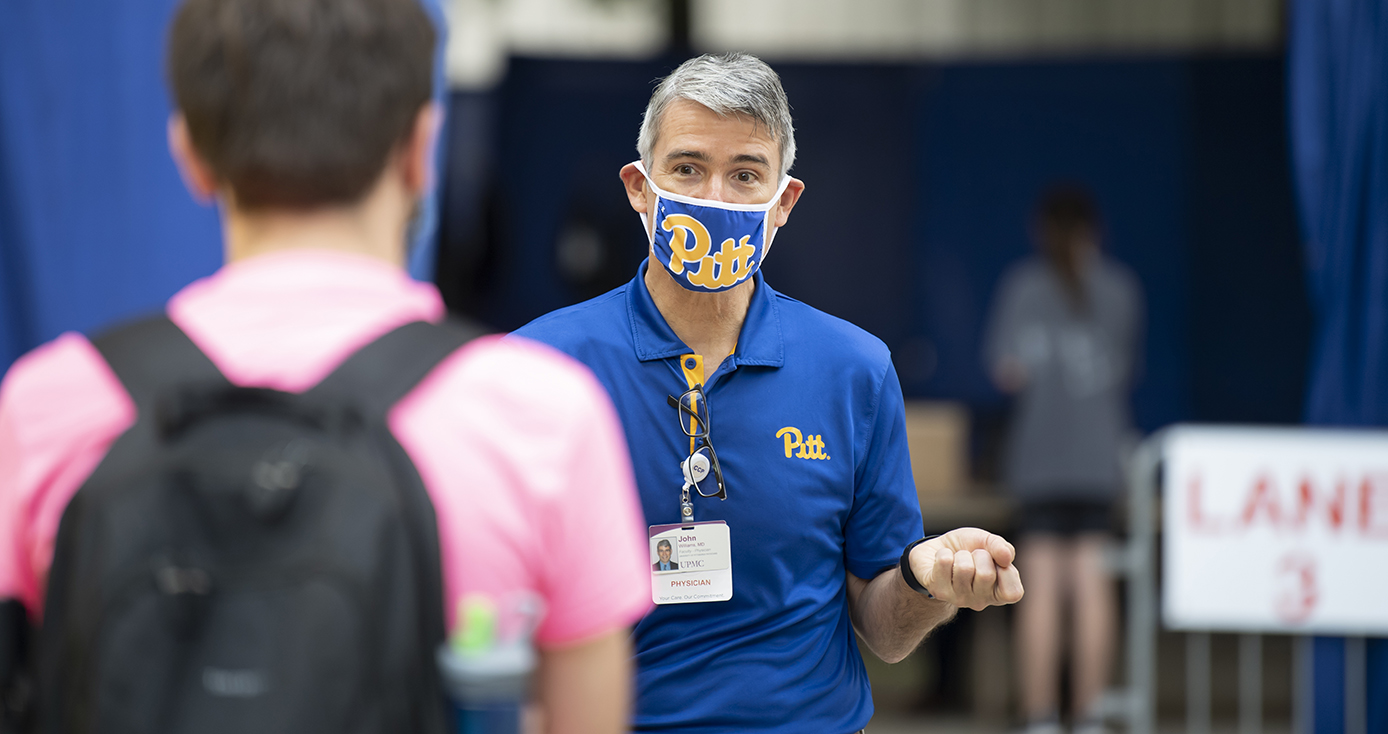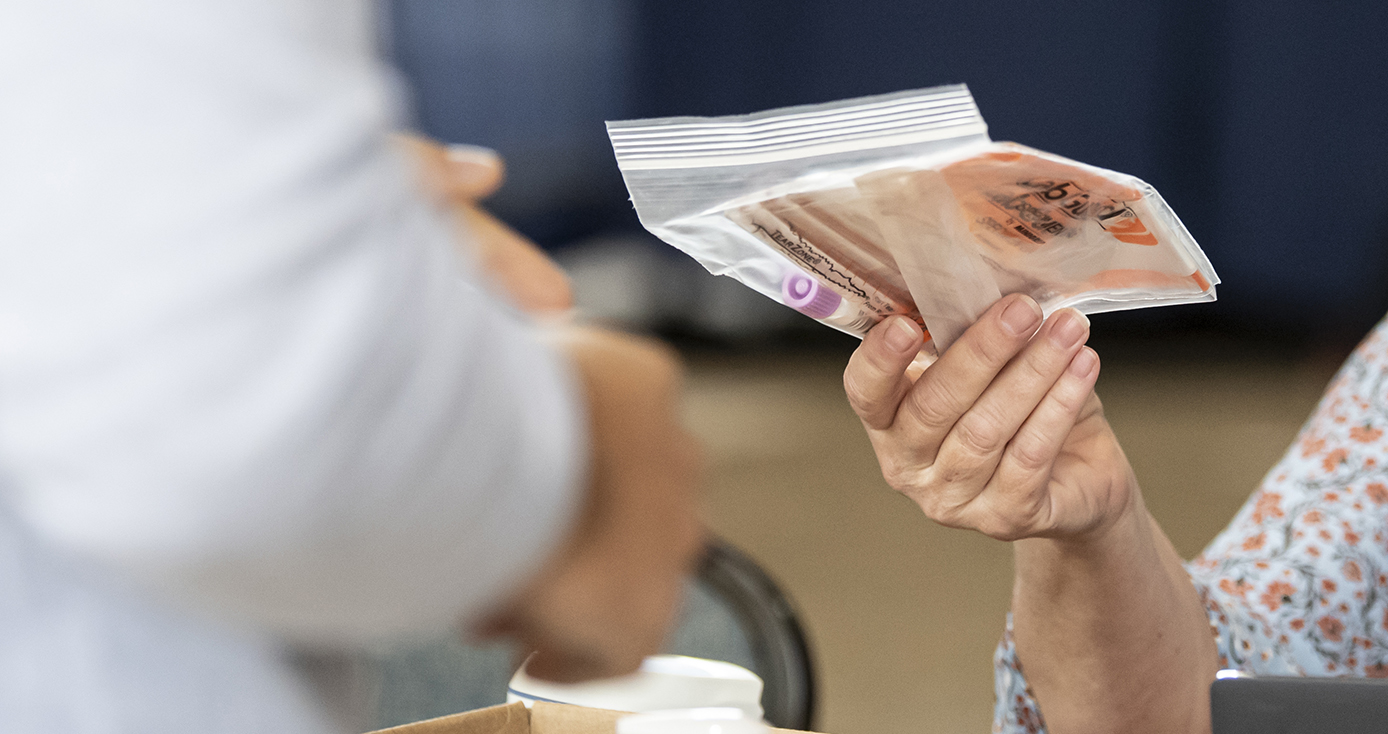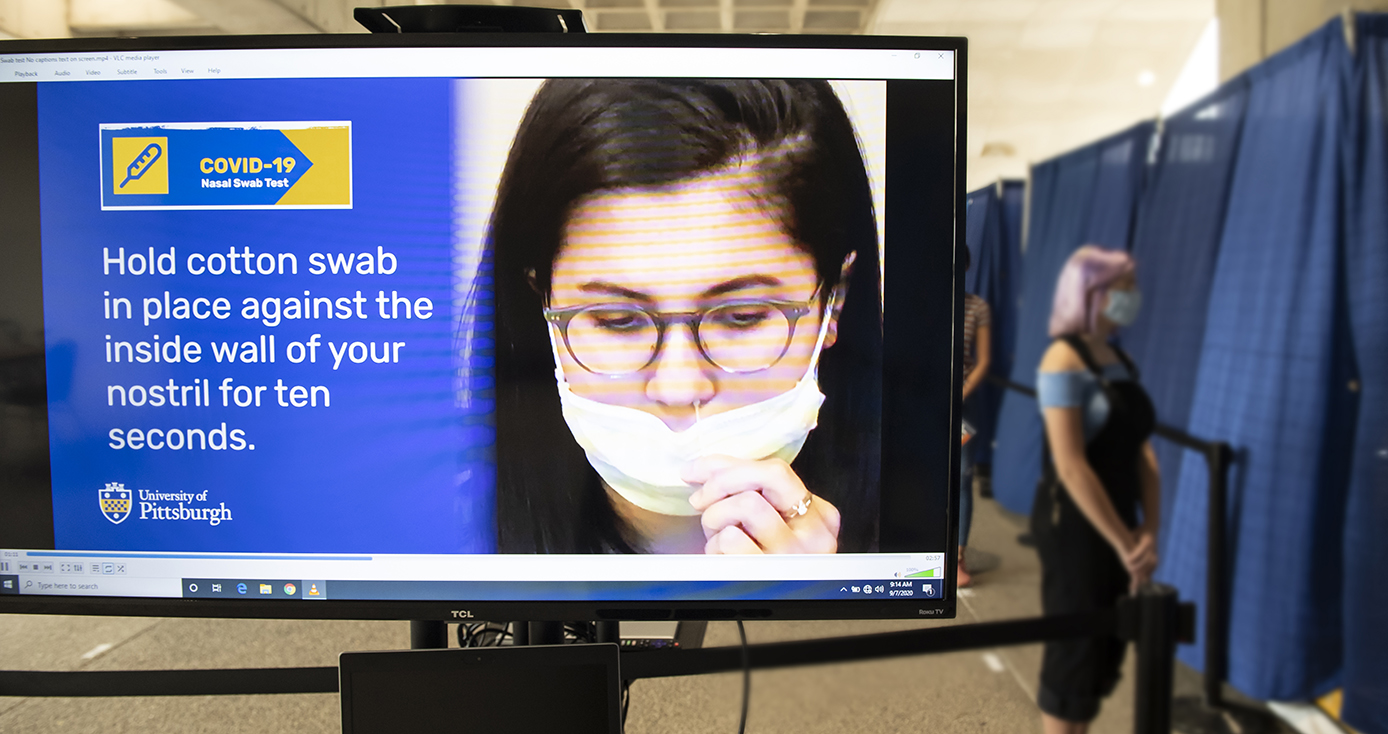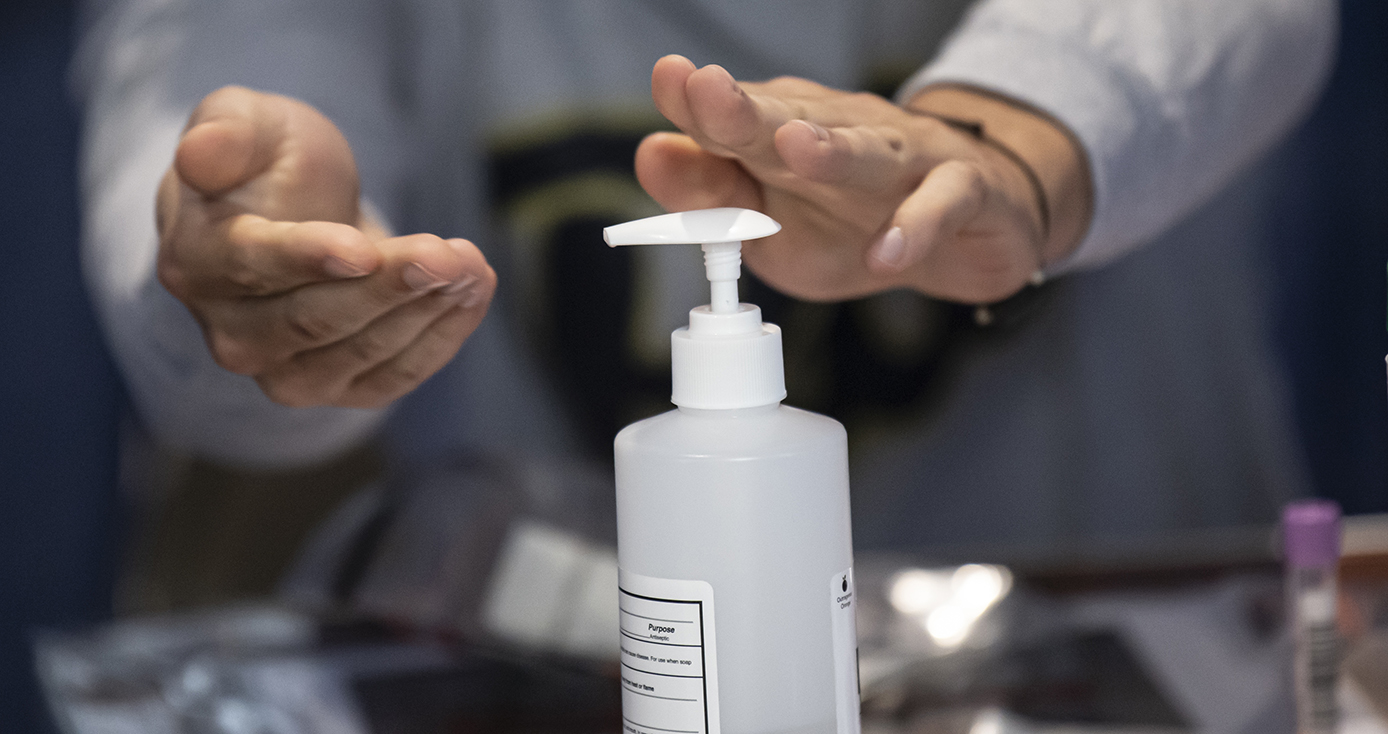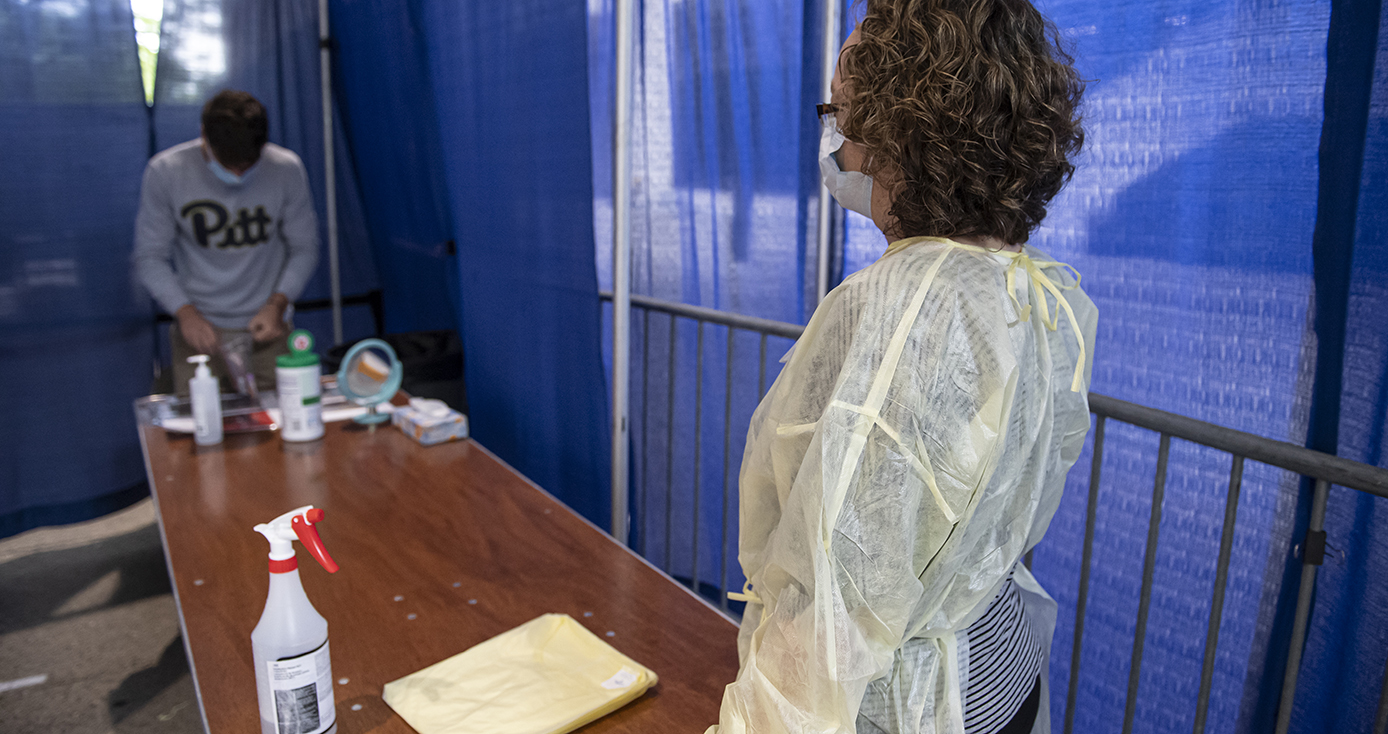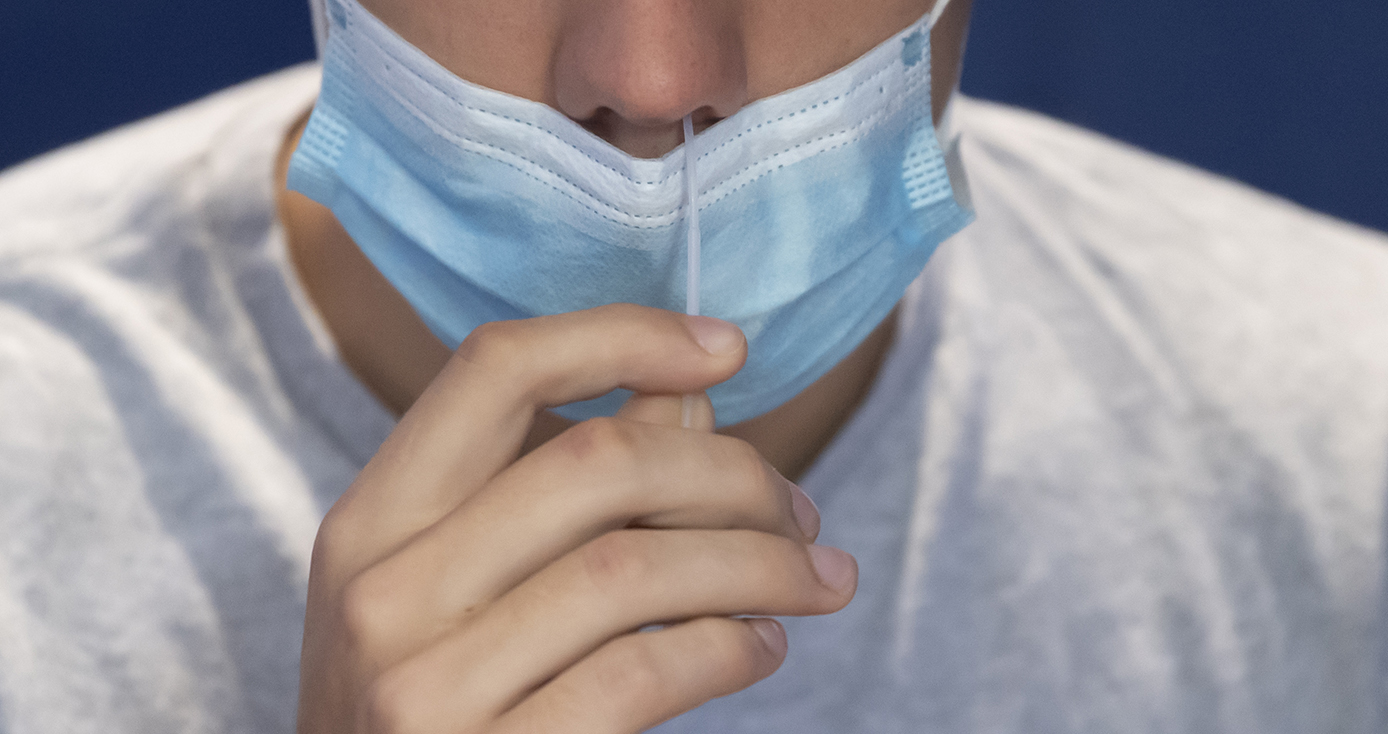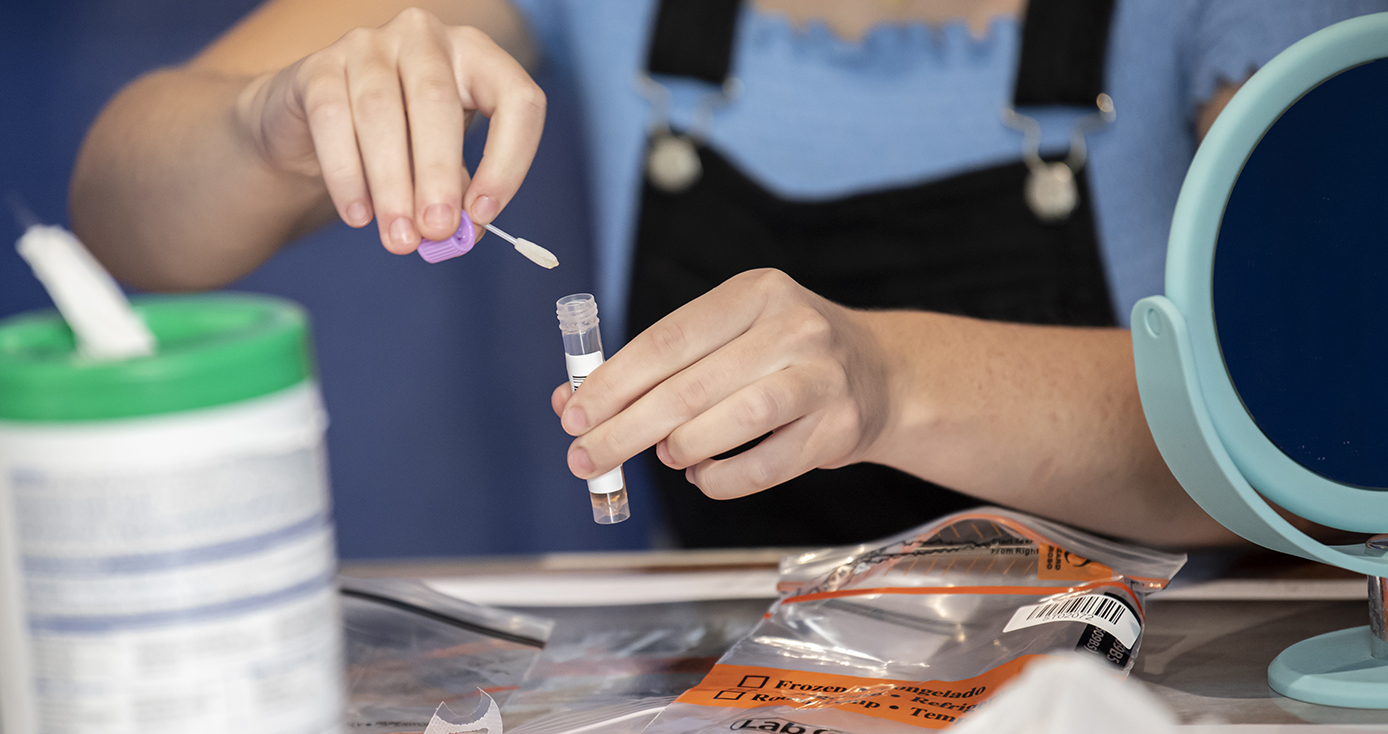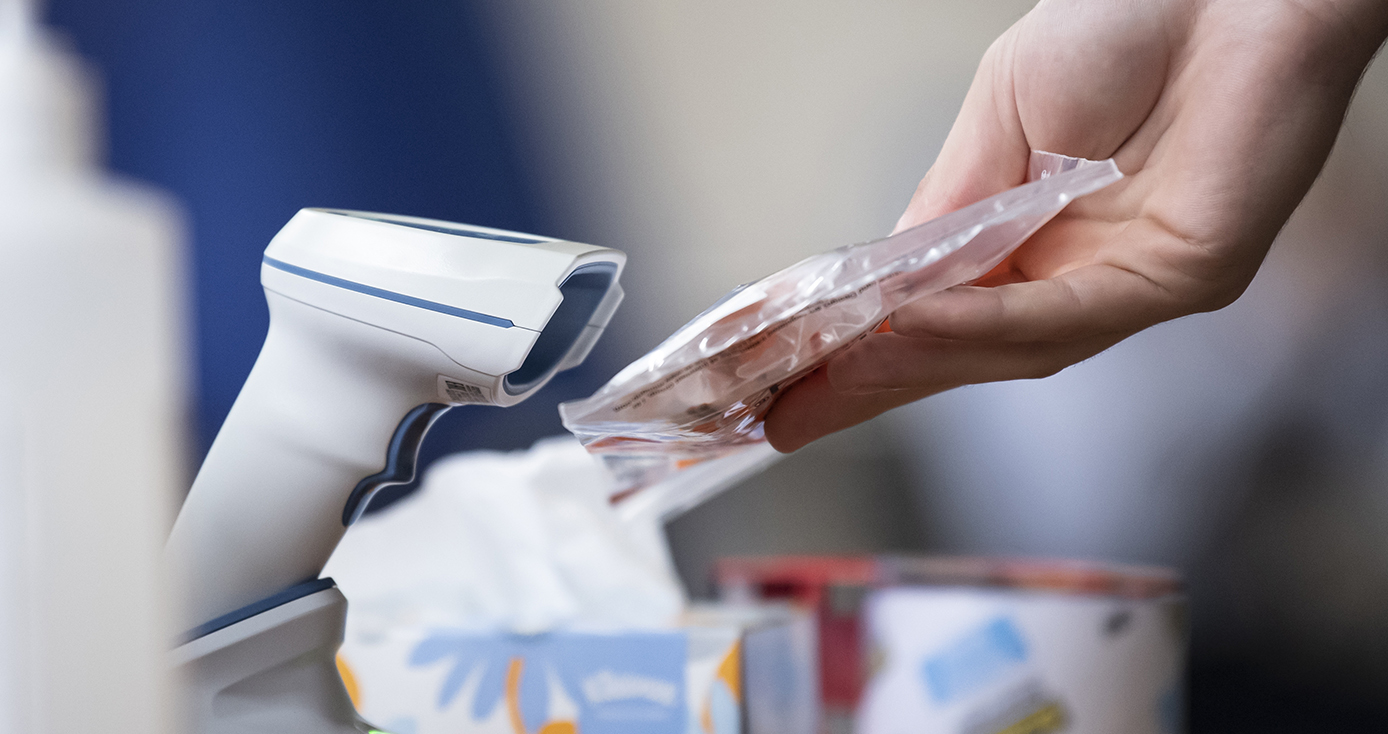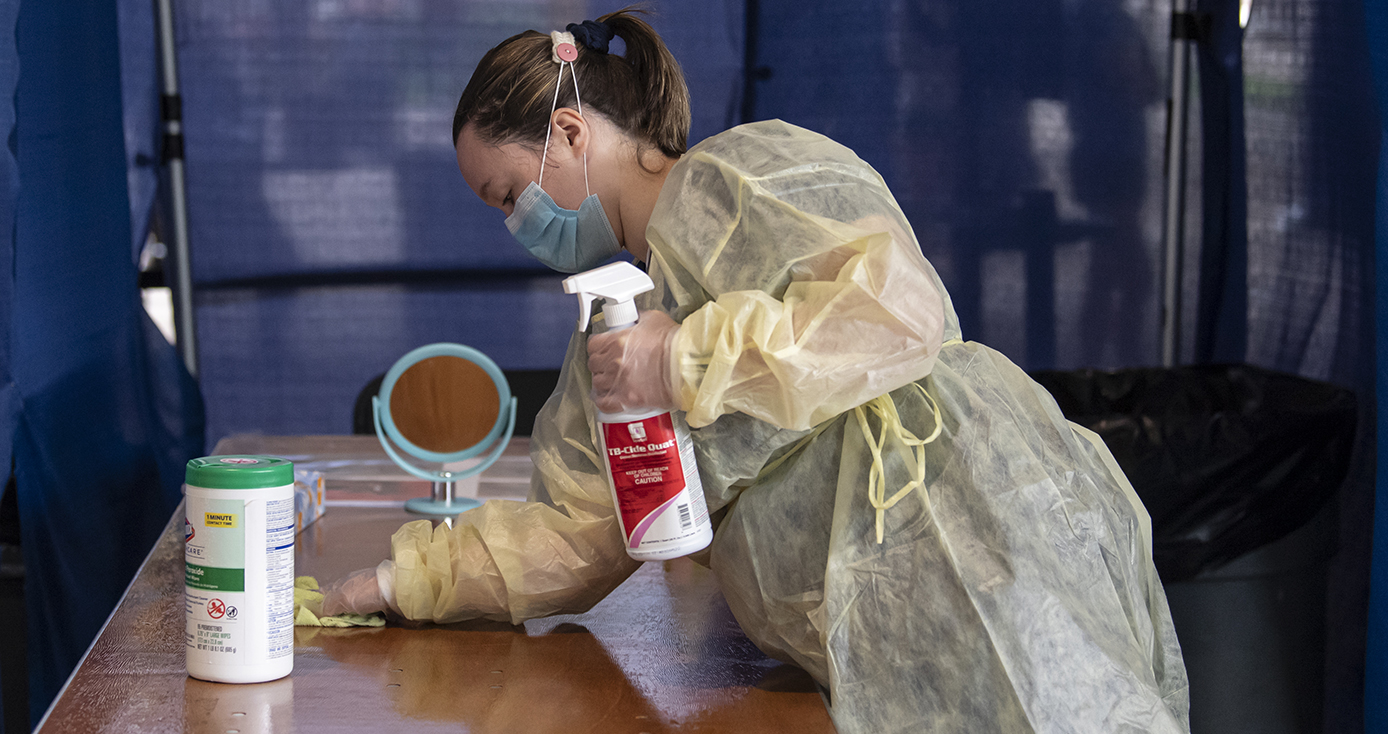
Subscribe to Pittwire Today
Get the most interesting and important stories from the University of Pittsburgh.Photo Essay: You’ve Been Selected for Surveillance Testing—Now What?
You open your inbox and see you’ve gotten an email from the CMRO, also known as the COVID-19 Medical Response Office, that says “You have been randomly selected to get tested as part of Pitt’s COVID-19 surveillance testing program.”
Don’t worry; you didn’t do anything wrong. It’s all a part of the plan—even if the COVID-19 pandemic wasn’t. Participating in the testing is a critical part of Pitt’s comprehensive, scientifically designed program to help keep the entire community safe.
By randomly selecting and testing a statistically predetermined subset of students—up to 250 per test date on the Pittsburgh campus—the University is working to monitor and contain the spread of COVID-19 on and off campus. During move-in, which began Aug. 11, almost 10% of students were tested with more testing in progress as the term continues. That early surveillance testing indicated a low prevalence of the virus among asymptomatic students.
Perhaps you’ve seen that short line in front of the arched yellow sculpture, “Light Up,” on Monday and Wednesday mornings. Since Aug. 12, University staff and medical student volunteers have been guiding students through the self-administered COVID-19 nasal swab test at the outdoor testing site between Wesley W. Posvar Hall and Hillman Library.
What under normal circumstances might lead to a free T-shirt or slice of pizza instead will hopefully lead you to something that, while perhaps not instantly gratifying, is considerably more rewarding in the long-run: a healthy on-campus experience. Every individual can do their part by taking part.
Testing only takes about 15 minutes and, unlike the original COVID-19 test you might have heard about in the spring, this test requires little to no discomfort. All you need to do is schedule a time to do the test (per the email’s PittSwab Scheduler). On the day of your scheduled test, grab your face covering and Pitt ID and venture out to the yellow sculpture, where testing staff are waiting to welcome you. And don’t worry: your results will be kept confidential. See what the process looks like.
Text by Susan Wiedel, photos by Aimee Obidzinski
“Please Wait Here,” read the white-painted letters spaced six feet apart on the ground, where masked students stand, leading to the giant yellow sculpture.
Just beyond the sculpture, a member of the testing staff greets you. Dash visions of hooded strangers in hazmat suits from your mind; on this morning, John V. Williams, chief of the School of Medicine’s Division of Infectious Diseases and director of the CMRO, is on welcoming duty. Williams and other staff members enthusiastically chat with students—about school, where they’re from, football—during their short wait in line, putting them at ease.
When it’s your turn, a staff member motions for you move forward into the blue-fenced testing site, where a staff member sits with a laptop, hand sanitizer and cardboard-box of unused testing kits. This is where you verify your identity (don’t forget your Pitt ID!), sanitize your hands (the first of many times), and receive your testing kit and corresponding barcode labels that will accompany your sample.
While the label is used to match an individual to their sample, the identities of individuals undergoing surveillance testing—as well as the results of those tests—remain confidential.
Once you have your testing kit and labels, you’ll proceed to a second small line to wait, physically distanced, of course, for testing booths to open. With eight testing booths, this line moves quickly.
While waiting your turn for a testing booth, you’ll have the opportunity to watch a video that describes the entire swabbing process. Don’t think you need to memorize it: a staff member will guide you through the entire testing process. The process is so quick and easy, you’ll probably see the video twice.
When your turn has arrived, you’ll be called to the other side of the draped blue wall and directed to an open, sanitized testing booth—a long table, empty but for a mirror, disinfectant and hand sanitizer—at which you and a staff member will stand at either end facing each other. Before doing anything else, it’s again time to sanitize your hands.
The testing begins: Empty contents of bag on the table. Prepare testing kit materials as staff directs.
After peeling the wrapper from the swab, the way you would with a stick of string cheese, be careful to not let the soft end of the swab touch your hands. Lower your face covering just below your nose and insert the soft end of the swab ½ inch into your nostril. Make three wide circles with the swab, touching all sides of your nostril, then leave it against the inside wall of your nose as staff counts down from 10. Repeat the same process with the other nostril, and your swab-taking is complete—as humdrum as a walk to the coffee shop. Don’t forget to replace your face covering over your nose.
Bend and snap the swab as instructed by the staff member; throw the hand-end in the trash. Remove lid of test tube, place the swab in the tube and replace the lid. Put the tube in the bag without labels, smooth out the air from the bag and close it. Sanitize your hands and use a wipe to clean the front and back of the bag. Place that bag in the bag with labels, smooth out the air and close the bag. Wipe both sides of the second bag. Sanitize your hands (yep, again).
When directed by the staff member, head over to the next table, where you will scan the labeled bag, give the staff member your identification and contact information, and place the bag in the red cooler at your feet.
After you leave, staff members such as Anastasia Pryor (pictured) thoroughly disinfect each testing booth before any other swabs are taken in order to keep the testing environment as safe as possible.
And that’s it. You can be on your way while your sample is whisked off for analysis. If your test is positive, you will be contacted within 48 hours by Student Health Services staff, who will work with you to determine next steps. Negative results will be shared via email.
“It was easier than I thought; I was worried about it hurting,” said one student of the experience. But in the end, “It was good.”
With your test complete, you’ve played an important role in showing the world the power of Pitt. To continue flattening the curve, please remain vigilant and practice healthy behaviors—wear a face covering, and practice physical distancing and hand hygiene.


